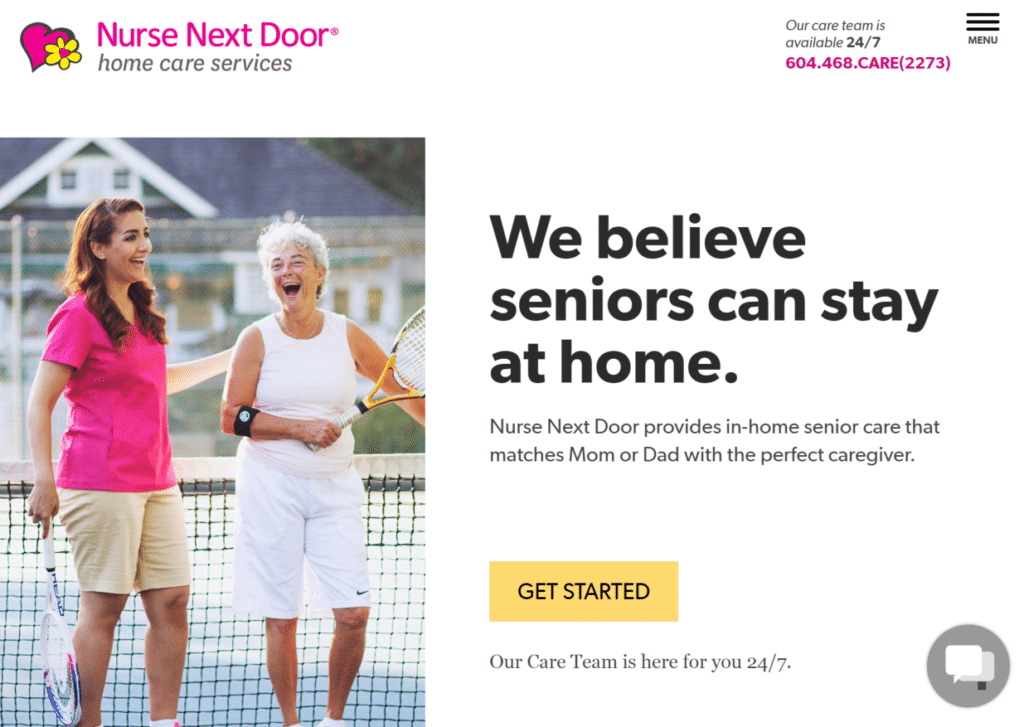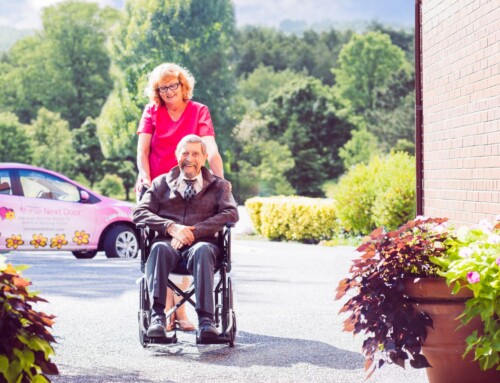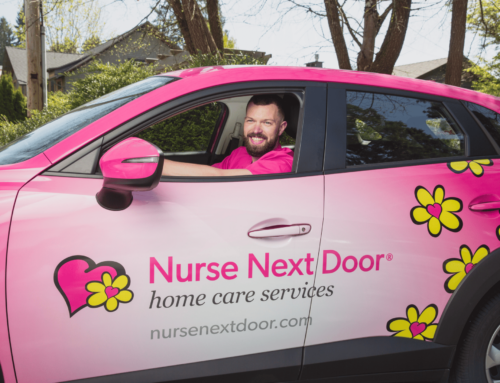Nurse Next Door’s Website Redesign
Humans are emotional beings. The first thing we do when we enter this world is show emotion — we cry, laugh, love, scowl and hug. We experience a range of emotions as we grow: fear and joy, anger and surprise. Neuroscientist, Antonio Damasio, argues that “emotions play a central role in social cognition and decision-making. Emotions, far from being barriers to it, are a crucial component of decision-making.” Ultimately, we tend to lead decision-making with our emotions.
There are certain decisions that evoke more emotion than others. Purchasing a toothbrush at the grocery store is a much different emotional event than choosing a wedding dress. Deciding to choose senior home care for an aging family member can be an emotional journey. The decision can be unexpected – the impetus for care may be an accident or health issue – or the journey for care for an aging loved one may begin with: “I will never live in a retirement facility,” far before care is required. It is important to have all of the information to make an informed decision about the best type of care for an aging loved one.
Nurse Next Door Home Care Services understands that finding senior home care for an aging loved one requires a significant emotional commitment from the individual that inquires about care, the individual receiving care and their family who are deeply invested in the happiness and well being of their loved one. It is a decision that takes research, time, and can be a difficult and emotional journey.
Assessing our strengths and opportunities
Mapping out the full elder home care experience of Nurse Next Door clients was key to identifying their challenges, and embracing the highs and lows they felt in order for us to deliver value and improve our service at every step of their journey.
Offline, we were successful at communicating expectations of elder home care, and connecting with people who would go through this emotional time with their families – showing clients how we understand their needs and are here to provide support. Face-to-face, we could make a deep and real connection with them, listen to their stories, their struggles, their fears and be able to have a dialogue with them.
Online, we recognized a disconnect – primarily from dated website content and inconsistent layout experiences between pages, which could distract new clients in immediate need of help and make it difficult to find information.
Not just another website redesign
To humanize home care online is to first recognize that the client’s journey is not always digital, and that digital is only one platform of several that bridges other touch points to the heart of our business.
Nurse Next Door has been hard at work in partnership with BC-based digital service studio Domain7 to bring human-centered design to our website by applying Service Design methods. More than just a visual coat of new brand colors, the entire continuum of service and care was observed to understand individual emotions and needs throughout someone’s decision-making process.
How do you map and understand such an emotional journey in a digital experience?
In an end-to-end process, Domain7 put together extensive research including in-depth interviews with existing clients, caregivers and internal stakeholders.
Caregivers, specialists, and various team members from Scheduling to Marketing also came together to identify and map out a client’s experience of home care from beginning to end. This meant starting from the point before a client had ever heard about Nurse Next Door. By focusing on home care before websites, we could define what the best experience of delivering home care looked and felt like for both our clients and internal teams.
Research and data from these design activities culminated in a Design Thinking workshop hosted by Domain7 where both teams came together to discuss valuable findings and real, raw quotes and stories from clients and caregivers, and explored opportunity spaces in process and delivering more value, big ideas, and solutions enhanced by technology.
“Only 54% of companies have completely mapped out the customer journey. The rest are tackling digital transformation without establishing an end goal.” – Brian Solis, Digital Analyst and author of X: The Experience When Business Meets Design
Together with Domain7, Nurse Next Door is better understanding clients and potential clients needs at each step of their home care journey. “We know this isn’t a once-and-done process,” says Brenda Rigney, VP of Pink Ops, the team tasked with the website launch. “Transformation is evolutionary. But done right, we believe we can truly have an impact on the online experience of aging.”
Why Service Design?
Digital is no longer another channel that traditional teams can use as an isolated method to create exposure of their own brand – whether target audiences are consumers, clients, patients, or guests, digital is a medium that people flow into-and-out of at least hundreds of times a day to research, start, engage in, or end their relationship with a brand.
By applying Service Design methods, we are empowered to pay attention to the full experience, end-to-end, and deliver more useful, personal interactions that people expect.
Client Micro-moments, with the emotional context
Nurse Next Door could simply have launched a modern new website with more images of strong, bold seniors. But this alone would not have captured and alleviated the micro-moments and emotions of our clients that we speak with every day:
Busy, multi-tasking Daughters start a Live Chat with us on their smartphones between the walls of their office cubicles because they learned Mom just had a fall; or concerned Sons call long-distance to several home care services hoping to find a reliable company that is local to Dad who lives alone and just suffered a stroke.
“We thought we knew the complete customer journey,” says Vanessa Lew, Nurse Next Door UX/UI Designer. “We brought it all back to the beginning, walking through each step, stage and interaction throughout a client’s journey. We realized all members from our Caregivers and Care Services Specialists to Operations had different perspectives on the same thing, and recognized the need to streamline our communication and voice to ensure a consistent and empathetic experience online.”
By involving front line members who delivered the care, and family members of clients who could share their moments of both vulnerability and relief, our process encouraged more internal cross-team collaboration, which guided many of our design decisions for the business.
Vanessa believes that this process is helping to change organizations. “A thoughtful user experience, powered by digital features, can by extension change what service feels like for all of our clients.”

 x
x









